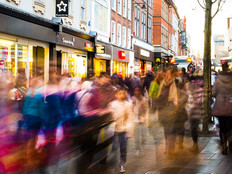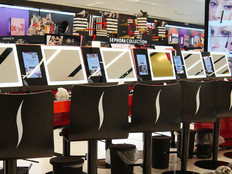Black Friday 2016: The Best Practices Retailers Should Follow to Get Their Tech Ready
Black Friday is rapidly approaching, and with it the official kickoff of the holiday shopping season. The day after Thanksgiving is typically the busiest retail day of the year (although the Monday after, Cyber Monday, is gaining in importance).
Yet to take advantage of the increased volume of shoppers, retailers need to make sure they have robust and secure networks and strong supporting IT infrastructure in place. Retailers have been adding more technology to their stores, including Bluetooth low energy beacons to track shoppers, interactive kiosks, mobile point-of-sale terminals and more. To make Black Friday a success, those technologies need to function properly and be linked to a retailer’s back-end IT and payment systems.
There’s a lot of money on the table, and retailers should do all they can to ensure that they don’t have issues with their IT that lead to lost revenue.
Brick-and-mortar sales on Black Friday fell from $11.6 billion in 2014, to $10.4 billion in 2015, according to consumer analytics provider ShopperTrak. However, customers spent $2.72 billion online on Black Friday 2015, according to Adobe Digital Index, 14 percent more than in 2014. Adobe predicts that Black Friday will bring in more than $3 billion in online e-commerce revenue in 2016.
Preparation For Black Friday Is Key
Testing technologies that are already in place is critical for retailers. Rebecca Schuette, director of marketing at Swirl Networks, which offers an in-store mobile marketing platform to attract customers while they shop in stores, notes that many retailers rely on mobile presence technologies — including global positioning systems, Wi-Fi, Bluetooth beacons and visible light communications — to better engage in-store shoppers on Black Friday and throughout the holiday shopping season.
Schuette says that to ensure success, retailers should conduct location wireless signal health checks to measure battery levels and ensure that signal strength is optimized for the holiday season.
Retailers should test push notifications, mobile messaging content and calls to action via mobile platforms to drive engagement rates, she says. She adds that retailers also need to develop strategies to update mobile marketing on the fly based on the latest store sales data.
“Preparation can make a world of difference here,” Kamal Karmakar, CEO of retail management software company CitiXsys, wrote in a blog post. “Whether streamlining the website checkout process or cutting down Black Friday waiting times by arming in-store staff with mobile point of sale devices, staying aware of customer behavior can help retailers better serve their customers, even with higher than usual traffic volumes.”
Ensuring Robust Networks
To ensure their technology performs properly, retailers need to test and fortify their networks. Ulrike Mueller, chief technology officer of NewStore, which makes an end-to-end mobile retail platform, says that networks are “the most critical” aspect of retail technology.
Mueller says that mobile point-of-sale and beacon technologies are all limited if they cannot connect to Wi-Fi and if retailers do not have enough access points. Retailers need to ensure that all of these technologies work in all areas of the store and that they have enough bandwidth to handle higher than normal traffic volumes. Additionally, if retailers offer complimentary Wi-Fi to customers, that use of bandwidth should not interfere with a sales associate’s use of a mobile POS terminal to check out a customer.
Depending on how they have their network set up, Mueller says, retailers will need to work with their internet service provider or outside solutions providers to ensure their networks are functioning and have been architected properly.
The solutions retailers deploy, whether that is a POS terminal or a mobile application, should be resistant to failure. For example, she says, the checkout function of a mobile POS terminal should not be inhibited because a product image is not showing up. “There’s nothing worse than a customer having a product in their hand and being unable to check out,” Mueller says.
Scalable and Secure Solutions
In addition to their networks, retailers also need to have enough computing and storage resources to handle a large volume of transactions on Black Friday. Working with cloud service providers can help retailers get highly scalable resources.
“That is the whole promise of cloud systems, when they are provided by a Software as a Service vendor,” Mueller says. “They always have scaling mechanisms in place.”
Cloud providers can help retailers make estimates about how much demand they will see and how much capacity they will need. “When retailers have historic data, they can plan it out,” Mueller says. “Or the SaaS provider would do these maps.”
Retailers also need to ensure that customers’ payment data is secure, Mueller says, and there are many solutions that provide high levels of security and are not dependent on retailers’ networks.
“The right approach is that in the store, there are payment devices that encrypt the credit card info on the device and send it over to a specialized payment provider where the decryption is happening,” Mueller says. Unencrypted payment information should never be sent or stored on a retailer’s system, Mueller advises.
Apple is already enabling secure payments via the Safari web browser on iPhones and iPad tablets using its Apple Pay system, and Google is bringing its Android Pay service to the mobile web as well.









